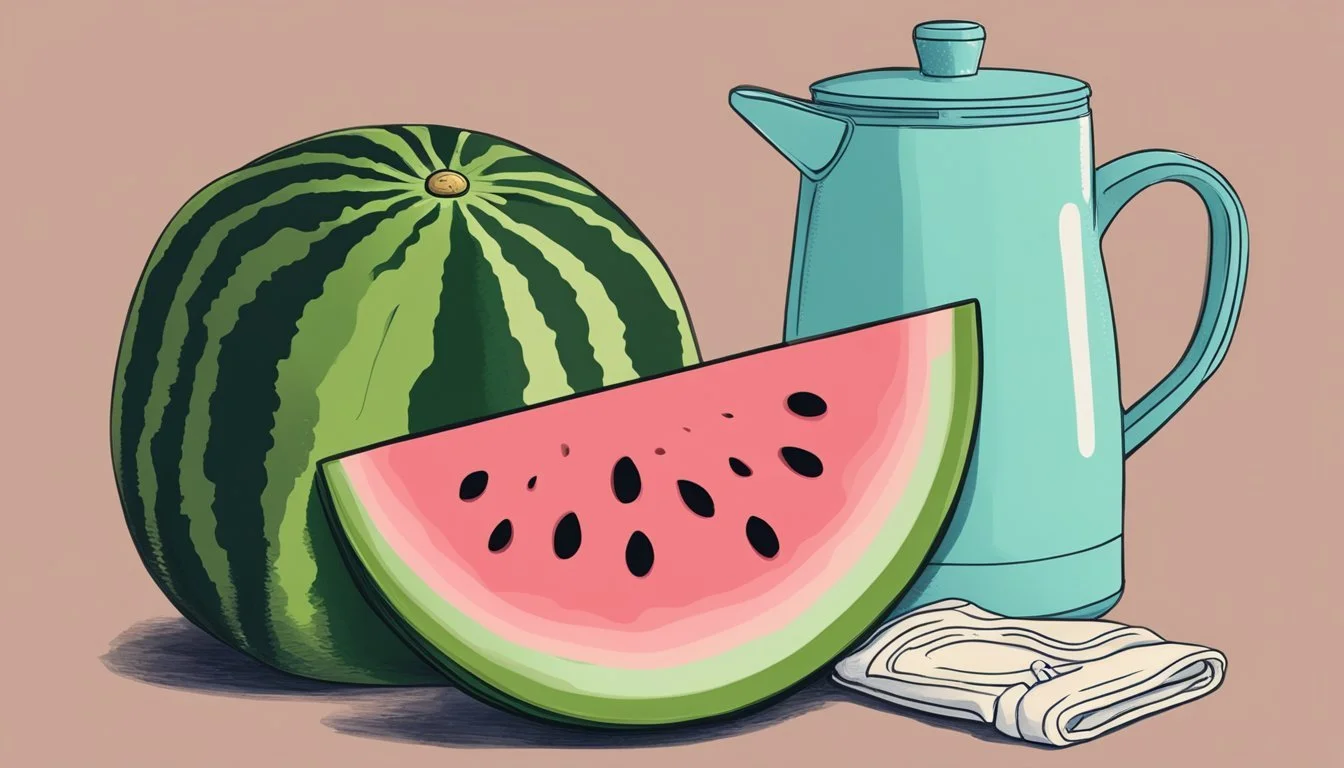Power Foods That Naturally Ease Period Cramps
Period cramps can be a challenging experience, often interfering with daily activities and comfort. Many individuals seek natural remedies to alleviate these symptoms, and diet plays a crucial role in this process. Foods rich in nutrients can help ease menstrual cramps and promote overall well-being during this time.
Eating the right foods can significantly reduce the severity of period cramps. By incorporating specific types of foods into one’s diet, it is possible to manage inflammation and improve overall comfort. This article will explore various dietary options that can help manage period pain effectively.
1) Ginger Tea
Ginger tea is a popular remedy for menstrual cramps due to its anti-inflammatory and antispasmodic properties. The naturally occurring compounds in ginger, such as gingerol and zingerone, help to reduce the production of prostaglandins. These are chemicals that cause uterine contractions and pain.
Research indicates that consuming ginger tea can be as effective as some over-the-counter pain medications in reducing menstrual pain. The warmth of the tea also provides soothing comfort, making it a preferred choice for many experiencing period discomfort.
To prepare ginger tea, simply steep fresh ginger slices in boiling water for about 10-15 minutes. Adding a bit of honey or lemon can enhance the flavor while also providing additional health benefits. Regular consumption of ginger tea during menstruation may help alleviate cramps and improve overall well-being.
For those who prefer convenience, ginger tea bags are widely available in stores and offer similar benefits. It’s important to consult with a healthcare provider before making significant changes to one's diet or using herbal remedies extensively.
2) Dark Chocolate
Dark chocolate can be a beneficial food for easing period cramps. It contains magnesium, a mineral known to relax muscles and reduce the intensity of cramps.
Rich in antioxidants, dark chocolate also aids in reducing inflammation. Lowering inflammation can help decrease pain associated with menstrual cramps.
Studies have shown that consuming dark chocolate can improve mood. This is due to its capacity to increase serotonin levels, which can be particularly helpful during menstruation.
For those looking to alleviate menstrual pain, incorporating 40-120 grams of dark chocolate per day during their period may offer relief. Dark chocolate with a high cocoa content is the best choice due to its higher mineral and antioxidant levels.
A moderate approach is key, as overconsumption can lead to other health issues. Stick to dark chocolate with at least 70% cocoa to maximize potential benefits.
3) Bananas
Bananas are an excellent choice for alleviating period cramps. They are rich in vitamin B6, which can help reduce bloating and water retention commonly experienced during menstruation.
Their high potassium content helps regulate muscle contractions and prevent cramping. This mineral counteracts the effects of sodium in the body, reducing muscle tension and discomfort.
For those experiencing digestive issues during their period, bananas offer a soothing solution. The fruit's natural sugars, like fructose and glucose, provide a quick energy boost without causing rapid blood sugar spikes.
Including bananas in the diet can also help maintain a healthy digestive system. Their soluble fiber content aids in promoting regular bowel movements, which can be beneficial when experiencing menstrual cramps.
They are versatile and can easily be added to various meals and snacks. Whether eaten on their own, blended into smoothies, or added to yogurt, bananas provide a convenient way to ease menstrual discomfort.
4) Salmon
Salmon is a powerful ally in combating period cramps. It is rich in omega-3 fatty acids, which have anti-inflammatory properties that can help reduce menstrual pain.
This fish also contains vitamin D. Vitamin D is known to play a role in reducing the production of prostaglandins, which can cause severe menstrual cramps.
High in protein, salmon provides sustained energy. This can be especially helpful during menstruation when energy levels might be low.
Additionally, salmon is a versatile ingredient. It can be prepared in various ways—grilled, baked, or steamed—making it easy to incorporate into your diet regularly.
Eating salmon two to three times a week can provide consistent benefits. This frequency ensures that your body maintains adequate levels of omega-3s and other essential nutrients.
Including salmon in your diet isn’t just beneficial for period cramps. Its overall nutritional profile supports heart health, brain function, and overall well-being.
Adding salmon to meals, such as salads and pasta dishes, makes it convenient to enjoy its health benefits without much effort.
5) Oranges
Oranges are a beneficial fruit to incorporate into the diet during menstrual periods. They are rich in vitamin C, which can help reduce inflammation and relieve cramps.
The high water content in oranges ensures hydration, which is essential in managing period symptoms. Hydrated muscles are less likely to spasm, easing the severity of cramps.
Oranges also contain natural sugars that can provide energy. This is important as menstrual periods can sometimes lead to fatigue.
The antioxidants in oranges help combat oxidative stress. This can alleviate some discomfort associated with periods. Including oranges in the diet can offer both nutrient support and symptom relief.
6) Yogurt
Yogurt is a valuable addition to the diet during menstruation. It is rich in calcium, a mineral that plays a crucial role in regulating muscle contractions, which can help alleviate menstrual cramps. Including calcium-rich foods like yogurt can make a difference in how one experiences period pain.
Beyond calcium, yogurt is an excellent source of probiotics. Probiotics are beneficial bacteria that promote gut health and can aid in reducing inflammation. Consuming yogurt with live cultures can help maintain a healthy balance of gut bacteria, potentially reducing bloating and discomfort associated with menstruation.
Yogurt also contains vitamin D, which aids in calcium absorption and may contribute to easing muscle cramps. This nutrient combination makes yogurt a practical and nutritious choice for those looking to reduce period pain through their diet.
Whether eaten plain or mixed with fruits and nuts, yogurt can be a versatile and tasty way to include these essential nutrients in the daily diet. Opting for low-fat or Greek yogurt can provide additional protein, which can keep energy levels stable during menstruation.
7) Spinach
Spinach is an excellent food choice for those experiencing period cramps. It is rich in iron, which can help combat fatigue and weakness that often accompany heavy menstrual bleeding.
This leafy green is also high in magnesium, a mineral known to alleviate muscle contractions and soreness, both common symptoms during menstruation.
In addition to iron and magnesium, spinach provides vitamin E and B-complex vitamins. These nutrients work together to reduce cramping and improve overall well-being.
Spinach can be easily incorporated into meals. It can be added to salads, smoothies, soups, and as a side dish. Cooking spinach slightly can help the body absorb its nutrients more effectively.
Incorporating spinach into the diet regularly can offer broader health benefits while specifically targeting menstrual discomfort.
8) Nuts and Seeds
Nuts and seeds are excellent additions to a diet aimed at alleviating period cramps. They are rich in magnesium, which can help reduce muscle contractions and ease cramping. Walnuts, almonds, chia seeds, and flaxseeds are common options that are both nutritious and effective.
Omega-3 fatty acids found in walnuts and flaxseeds have anti-inflammatory properties. These properties can help reduce the inflammation that often accompanies menstrual discomfort. Consuming a handful of these nuts and seeds regularly may provide noticeable relief.
In addition to their anti-inflammatory benefits, nuts and seeds offer essential micronutrients. They contain minerals like calcium and zinc, which play a role in muscle function and overall reproductive health. These nutrients can further help in reducing the severity of period cramps.
For those looking to incorporate more nuts and seeds into their diet, they can be easily added to meals. Sprinkling chia seeds or flaxseeds on yogurt or salads is a simple way to enhance nutritional intake. Similarly, almonds and walnuts can be eaten as snacks or added to dishes for an extra crunch.
Nuts and seeds are versatile, making them easy to include in various dishes. Their combination of omega-3 fatty acids, magnesium, and other essential nutrients makes them effective in managing period cramps and promoting overall menstrual health.
9) Chamomile Tea
Chamomile tea is known for its soothing properties and has been used for centuries as a natural remedy to alleviate various ailments, including menstrual cramps.
It contains anti-inflammatory compounds that help reduce pain and discomfort.
Quercetin, one of the active ingredients in chamomile, has antispasmodic properties that help relieve muscle contractions, common during menstruation.
Drinking chamomile tea may also help in reducing stress and promoting relaxation, making it easier to manage period pain.
It is best enjoyed before bedtime or after meals to maximize its calming effects.
Regular consumption during the menstrual cycle can provide continual relief from cramping and promote general well-being.
Chamomile tea's mild flavor and low risk make it a suitable option for many.
10) Watermelon
Watermelon is a hydrating fruit that can provide relief during menstrual cramps. It has a high water content, which helps to keep the body hydrated and reduce bloating.
Rich in vitamins A and C, watermelon supports overall health, including immune system function. The natural sugars in watermelon can provide a gentle energy boost without causing a spike in blood sugar.
Additionally, watermelon contains antioxidants that can help fight inflammation, potentially easing cramps and muscle soreness. Its refreshing taste makes it an easy and enjoyable snack during menstruation.
Eating watermelon can also promote digestion due to its fiber content. Including it in the diet during a period may help alleviate some of the discomfort associated with cramps.
Understanding Period Cramps
Period cramps are common discomforts experienced by many during menstruation. These cramps can vary in intensity and are mainly due to uterine contractions.
What Causes Period Cramps
Period cramps, also known as dysmenorrhea, are primarily caused by the contraction of the uterine muscles. When the uterus contracts too strongly, it can press against nearby blood vessels, cutting off the oxygen supply to the muscle tissue and causing pain. Prostaglandins, hormone-like substances, play a significant role in triggering these contractions.
Higher levels of prostaglandins are often associated with more severe menstrual cramps. Additionally, certain underlying health conditions, like endometriosis or fibroids, can also contribute to the intensity of the pain. A person's individual pain threshold and stress levels may also influence the severity of their cramps.
Types of Menstrual Pain
Menstrual pain can be classified into two main types: primary dysmenorrhea and secondary dysmenorrhea.
Primary dysmenorrhea is the more common form and is characterized by pain in the lower abdomen or back, starting just before or during menstruation. This type of pain usually begins in adolescence and can continue throughout a woman's reproductive years. It is not associated with any other medical issues.
Secondary dysmenorrhea is less common and typically results from underlying reproductive system disorders. Conditions such as endometriosis, adenomyosis, pelvic inflammatory disease, or fibroids can cause this type of pain. Secondary dysmenorrhea usually starts later in life and the pain often lasts longer than the normal menstrual cramps associated with primary dysmenorrhea. Identifying and treating the underlying cause can help alleviate these symptoms.
Nutritional Approaches to Relieve Period Cramps
A balanced diet and adequate hydration play vital roles in alleviating period cramps. Consuming anti-inflammatory foods and staying hydrated can reduce pain and improve overall well-being.
Importance of a Balanced Diet
Eating a variety of nutrient-dense foods can significantly reduce menstrual discomfort. Incorporating omega-3 fatty acids, found in avocados and nuts, reduces inflammation, which can lessen cramping. Foods like walnuts, chia seeds, and flaxseeds are rich in magnesium, which helps relax muscle contractions.
Fatty fishes, such as salmon and mackerel, provide omega-3s that combat inflammation. Dark leafy greens are excellent sources of calcium and magnesium, both known to ease cramps. Consuming berries also offers anti-inflammatory benefits. It's important to avoid excessive consumption of sugar, processed foods, and caffeine, which can exacerbate cramps.
Role of Hydration
Staying well-hydrated is essential for minimizing period cramps. Water helps maintain optimal muscle function and prevents dehydration, which can worsen cramping. Herbal teas, especially those containing ginger or peppermint, can provide additional relief due to their anti-inflammatory properties.
Drinking sufficient water helps the body flush out excess sodium, reducing bloating and discomfort. Fluids such as coconut water offer electrolytes that maintain fluid balance. Avoiding caffeinated and sugary drinks is crucial as they can lead to dehydration and increased menstrual pain.
Implementing these nutritional strategies can make a significant difference in managing period cramps effectively.







